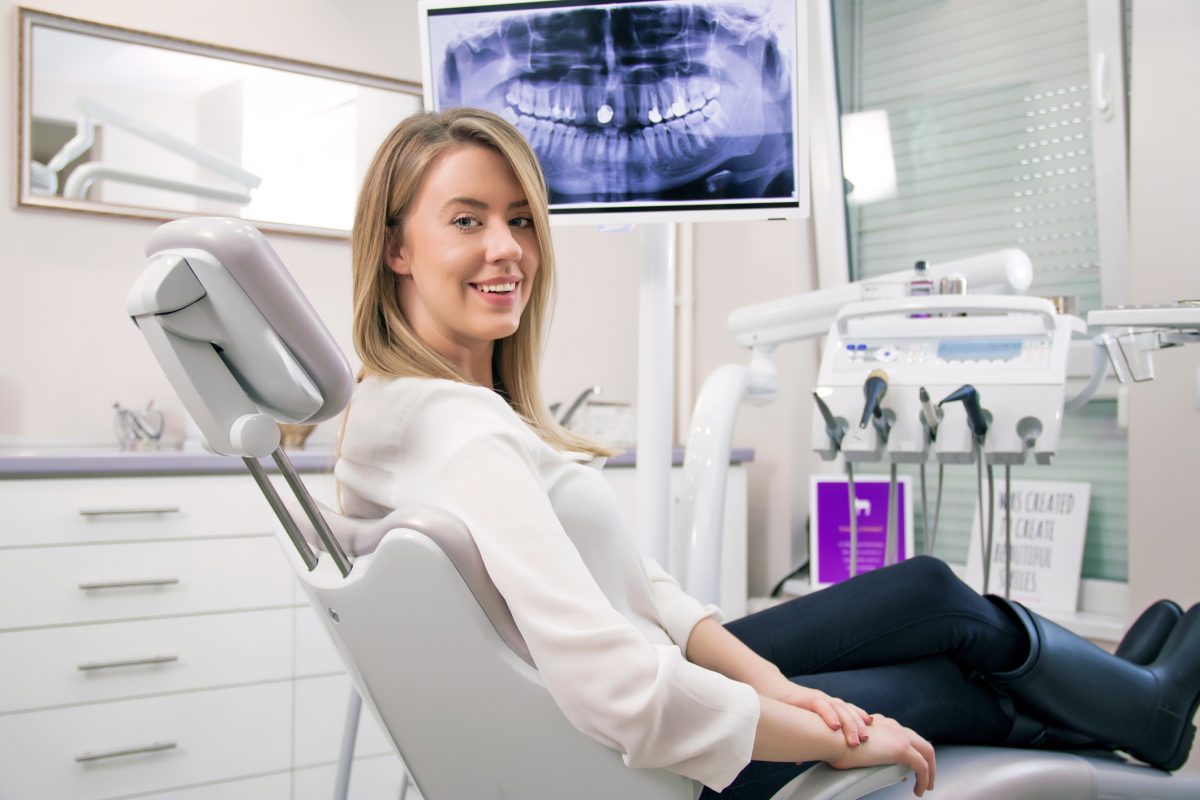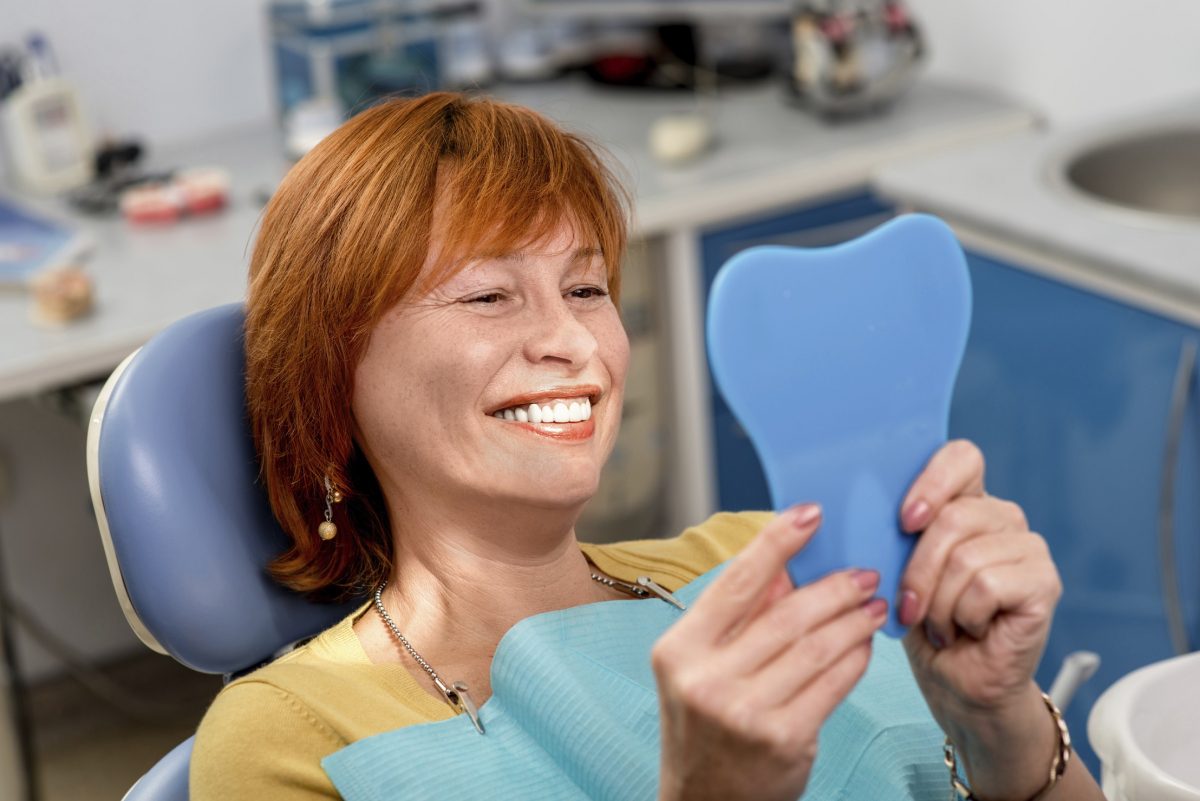Author: admin
Affordable Dentist In My Area, Litchfield MN
Getting affordable dental care is important to help you save costs on taking care of your own dental health and oral hygiene. When looking for a dentist, consider our practice; we provide exceptional dental care and high-quality services without compromising either. Our experienced team is proud to serve you and your family, which can help you achieve a healthy smile at an affordable price.
Range of treatments
We provide a full range of dental care, including preventive appointments like routine teeth cleanings and hygiene, general family dental care, cosmetic dentistry to improve the look of your smile as well as restorative dentistry. This means that you can book your appointments at the same time to save on time and money that would be spent moving between different practices. That said, each treatment plan is individually tailored around every patient’s needs, so you receive the level of care that is best suited to your needs.
State-of-the-art dental equipment
Our investment in the newest dental equipment allows us to offer you innovative treatment options, and tailor a specialized plan just for your needs. We will not only identify looming dental problems early and introduce a simple solution, but also provide the complete treatment plan for major dental issues to restore your mouth’s function and appearance. For these reasons, our modern treatments are designed to be more comfortable and they focus on minimal intrusion yet maximum preservation for your natural teeth. This leads to faster healing, shorter recovery time, and long-lasting dental work.
Need an Affordable Dentist Near Me? Call Us Today
If you’re searching for an affordable dentist who will not only offer reliable, high-quality care but also manage to keep your smile bright and healthy, then call our office today. We offer affordable, reliable, and highly professional dental services. From dental exams to routine teeth cleanings, teeth whitening, and other dental procedures, we offer quality treatments at an affordable price.
Call our office today to discuss possible payment plans and financing options.
Help Whiten Your Teeth with These In-Office Options in Litchfield MN
People can tell a lot from the shade of your teeth, including your age, state of oral health, and even your good and bad habits. And since everyone wants to look young and well groomed, teeth whitening has become one of the most popular cosmetic procedures in dentistry.
The advancements in tooth care have made the treatment more comfortable, predictable, long-lasting and affordable for all people. Although there are many effective ways to whiten your teeth, they vary depending on the treatment time and frequency, type of stain that can be removed, and the level of whitening that can be achieved.
There are many different teeth whitening methods available:
Professionally applied bleaching treatment:
With in office tooth whitening, the dentist applies a low concentration of bleach to the surface of your teeth using trays that fit snugly around your top and bottom teeth. After the in-office treatment, your dentist may give you some hydrogen peroxide gel and custom-made trays to continue your treatment at home for a specific period of time to maximize the teeth bleaching results
Dentist-prescribed treatment:
Your dentist will provide you with a home whitening kit containing trays and granules that have been tailor-made for your teeth. Whitening at home is a gradual process, but starts to show color payoff in two weeks or so.
Which option is the best?
It’s best to consult a dentist for a thorough examination of your teeth so your treatment can be tailored to your unique needs. During your first appointment for professional teeth cleaning, your dentist will examine your teeth carefully, review your oral health history, and then determine whether bleaching is right for you. Please visit your dentist today to discuss your teeth whitening goals and smile concerns.
Tooth Abscess Pain Relief & Dental Treatment in Litchfield MN
Infected teeth are caused by bacteria penetrating through your tooth enamel and dentin into the pulp space to cause an abscess (pulpitis), such that pus begins to collect within. It can also occur when bacteria gets trapped in deep gum pockets. This results in a number of unpleasant symptoms, including:
- Throbbing pain in the tooth
- Pain in the surrounding areas, such as the ear, lower jaw, and neck
- Soreness of infected tooth and surrounding area when biting
- Pain in the teeth when consuming hot or cold foods and drinks
- Bad taste in your mouth
- Fever and general feeling of being unwell
- Difficulty opening your mouth and swallowing
Types of tooth abscesses
If you suspect that you have a tooth infection, it is often best to visit your dentist immediately for diagnosis and/or emergency treatment.Your dentist may discover one of two types of tooth infections:
- Periapical abscess – It is the most common type of tooth infection. It happens when bacteria enters the enamel and begins to eat away at it, reaching the pulp inside the tooth. A bacterial infection in the tooth pulp causes pus to form around the root of the tooth, enlarging it.
- Periodontal abscess – This type of abscess is the result of untreated gum disease. The infected gum tissue becomes inflamed and begins to migrate away from the tooth, creating a space that is difficult to clean. Ultimately, a pocket of pus forms at the side of the tooth root to form a periodontal abscess.
Treatment options
Dental abscesses are often treated by removing the pus and resolving the infection. Additional treatments may include:
- Over-the-counter medication to help with the pain
- Antibiotics are used to stop the spread of infections.
- Root canal therapy and then capped with a dental crown to strengthen it
- Tooth extraction and replacement with a partial denture, bridgework, or dental implant.
Please visit your dentist for proper diagnosis and treatment.
White Filling Front Teeth | Litchfield MN
White fillings or Tooth colored fillings can help treat cavities and achieve long-lasting results. At our dental practice, we offer tooth colored filling procedures to help patients improve their smiles and restore their confidence. Tooth colored fillings can help treat cavities or decays in your lower and upper front teeth. These fillings will match the color of your teeth, but more importantly, provide an efficient and lasting solution to these issues.
What to Expect During Your Visit
When you visit our dental practice, our friendly and kind staff members will attend to you promptly and make you feel as comfortable as possible. If you require dental treatment, our skilled dentist will examine the issue and recommend a fitting procedure. If the tooth colored filling is right for you, our dentist will use the latest techniques and state-of-the-art dental equipment to restore the health of your mouth.
How the Tooth Colored Filling Procedure Works
Tooth-colored composite fillings bond to your teeth. During a visit, our dentist will apply a local anesthetic to make you comfortable and ensure the procedure is painless. The dentist will also remove any cavities, bacteria, plaque, and signs of tooth decay. They will also sterilize the oral cavity as well as surrounding areas before treatment and may apply a bonding agent afterwards to strengthen teeth that have endured excessive wear.
In addition, the dentist will carefully select a filling that matches your teeth’s natural color and place it on the tooth structure. The dentist will use a special curing light to harden the material in-between the teeth layers. After filling the cavities completely, our experienced dentist will smoothen and polish the tooth-colored filling to achieve a flawless outcome. You can start chewing food as soon as the filling procedure is complete.
Contact Us to Schedule a Dental Appointment
If you are interested in tooth-colored fillings for the front teeth, please reach out to our dental practice today to schedule an appointment. Our knowledgeable and friendly team will be available to answer any questions you may have.
Are You Looking for the Best Dentist Near Me? Litchfield MN
At our dental practice, we are dedicated to providing excellent and top-class dental services and solutions. Our goal is for you and your family to achieve an outstanding level of dental hygiene and oral health. Our dentists are experienced and qualified professionals in a variety of dental services, including cosmetic dentistry, general dentistry, and advanced procedures.
In addition, we offer general dentistry, cleanings, veneers, crowns & bridges, among other dental procedures. Our compassionate team will work diligently to perform the dental procedure and offer a lasting solution to your dental issues. When you need the best dentist near you for dental cleaning, treatment, or procedures, our dental practice remains the ideal place to visit.
What Every Patient Can Expect at Our Dental Practice
Our dental office understands the importance of understanding each person’s unique needs. For this reason, we offer customized care for any member of your family.
When you visit our dental practice, you can expect:
- Excellent and prompt dental services.
- Dental procedures performed with the latest techniques and state-of-the-art dental equipment.
- A comfortable and serene environment.
- Professionalism that will surpass your expectations.
We believe that our patients deserve only the best, which is why we provide excellent and reliable dental services. We are proud to be the preferred choice of many individuals and families since we realize that it’s not just about teeth but also about a caring and compassionate environment.
Looking for the Best Dentist Near Me? Contact Us Today!
Looking for the best dentist in your area? Call our dental practice to schedule a consultation with one of our qualified dentists. Our experienced team will be available to speak with you and help you understand your possible dental treatment options. We will recommend a dental procedure or solution that works best for you.
Professional Teeth Whitening Treatment Near Me, Litchfield MN
Your smile may gradually lose its sparkle regardless of how thorough your oral hygiene routine is. Although daily brushing and flossing as well as scheduling professional teeth cleanings can help prevent stains, age-related factors such as taking medications, smoking, drinking wine or tea can lead to yellow or brown teeth.
Tooth whitening provides a way to improve your teeth’s color and enhance your smile. You should discuss your desired outcome and current tooth shade with a dentist to design a personalized treatment plan. Professional teeth whitening is often the preferred method for many people, and it’s accomplished using hydrogen peroxide or a similar agent.
The treatment is performed by a dentist during the first appointment, and then under one’s supervision for subsequent treatments to ensure safety and effectiveness of the treatment.
The procedure involves:
- Placing a rubber shield or some gel to protect your gums
- Applying the bleaching agent on your teeth using some trays that fit snugly like a mouthguard
- Leaving the trays on to activate the bleaching ingredient and break it down into oxygen that penetrates tooth enamel to change the shade of your teeth
- A laser may be used to speed up the breakdown for faster results. This requires application of a higher concentration of the bleaching agent without using the trays, and then using laser technology to activate it. This improves the color of your teeth by 5-6 shades.
After your whitening treatment, the effects can last for longer if you practice proper oral hygiene. Please visit your dentist to learn more about teeth whitening options that may work for you.
Affordable Toothache Relief & Treatment Near Me, Litchfield MN
Toothaches are usually the result of tooth trauma or a dental condition, such as a cracked tooth, dental cavity, advanced gum disease, an exposed tooth root, or disorders of the jaw joint (temporomandibular joint). Pain can be either mild, severe or somewhere in-between, and it can vary from periodic to chronic.
Causes of tooth pain
The most common cause of dental pain is tooth decay, or cavities. Cavities are holes that form in the two outer layers of a tooth (tooth enamel and dentin) when you don’t brush your teeth properly, allowing acid in the mouth to erode them. If cavities are small in size, they may not cause any pain. However, as the cavity gets larger and deeper into the inner living tooth tissue (pulp), severe pain is felt when anything cold, hot, or sweet comes in contact with it.
Other causes of tooth pain include:
- Dental abscess – a tooth with a severe pulp injury can have an especially high risk of infection.
- Periodontal disease – bone loss and formation of deep gum pockets that cause gum infection and pain
- Tooth root sensitivities
- Impacted tooth
- Temporomandibular joint (TMJ) disorders – caused by arthritis, jaw injury from impact or recent dental work, or jaw muscle fatigue from habitually clenching and grinding teeth
Treatment for tooth pain
Depending on the diagnosis, your dentist may recommend one or more of the following treatments for a toothache:
- Over-the-counter pain relief medication
- Extraction of an impacted tooth
- Topical fluoride application for minor tooth sensitivities
- Dental filling for small and shallow cavities
- Dental crown for larger cavities
- Root canal therapy for cases that involve an injured pulp or infection,
- Tooth extraction of infected tooth followed by tooth replacement
- Teeth with advanced gum disease will need a thorough cleaning, as well as scaling and root planing in addition to improved tooth care habits.
The most important step is to visit a dentist for an examination of the mouth and teeth. An appropriate treatment may be suggested from that point.
The Benefits of Tooth Colored Fillings – Near Me | Litchfield MN
Searching for tooth colored fillings near me? Our dental practice is the right place for you. We are dedicated to providing excellent dental services. Our experienced dentist will explain the benefits of tooth colored fillings and take you through what should happen during the procedure. With this knowledge, we can ensure that your teeth remain healthy and attractive. But how much do you know about tooth-colored fillings or their benefits?
What are Tooth Colored Fillings?
Tooth-colored fillings are designed to match the color of your teeth, which makes it possible for them to blend in with your natural tooth structure. Composite or plastic fillings can be used on front or back teeth.
What Are the Benefits of Tooth Colored Fillings?
Modern dental fillings match the color of teeth, strengthening and beautifying them. Some of the benefits include:
- Helps restore the natural appearance of your teeth.
- Restores your beautiful smile and allows you to smile with confidence.
- Blend seamlessly with your surrounding tooth and are virtually unnoticeable
- Improve your teeth’s strength by minimizing the amount of healthy tooth structure removed during the filling process.
- Resistant to expansion and contraction, which reduces the risk of fractures compared to metal tooth fillings
- No tooth discoloration, which makes it easier to maintain your white, bright smile
- Also, tooth-colored fillings are very durable and will serve you for an extended period.
Furthermore, tooth-colored fillings are great for filling in cavities. You can choose from custom shades that will complement the color of your surrounding teeth too.
Schedule a Consultation Today!
Tooth-colored fillings can help restore the full function of your mouth and improve the appearance to your teeth, resulting in a beautiful smile. Contact our dental practice today to discover more about this dental procedure and enjoy the benefits of a beautiful smile. Our dentists will be happy to meet with you and discuss your dental options.
Best Rated General Dentist Dentist Near Me, Litchfield MN
Your natural teeth should last a lifetime with proper care and maintenance. That is why you need a reliable dentist near me to help provide adequate care for your dental health, treat dental issues, and adjust your overall dental hygiene routine as your needs change. But before choosing a new dentist, it is important that you carry out detailed research. If you need a top rated dentist near me, our dental practice is the ideal place to turn to.
At our dental office, we work with a team of experts who have the necessary experience to address various procedures for patients of all ages. We work with a dedicated team with several years of experience in various dental procedures. We offer dental exams, routine cleanings, and other advanced dental procedures at our deluxe dental office.
Preventative Dental Care
We believe in taking preventive measures, such as brushing your teeth and flossing at home to reduce the risk of dental problems. We also encourage regular visits to our office for professional teeth cleanings. Our dentist can help you with this to reduce the risk of dental problems in the future. In addition, routine exams can allow us to repair teeth at their earliest possible stage, reducing discomfort and tooth decay.
Restorative Dental Services
Dental emergencies can happen to anyone when you least expect it. It is important to have a nearby dentist for treatment when necessary. Our experienced dentist and dental team performs a wide range of dental procedures using state-of-the-art dental equipment, the newest techniques, and advanced technology. This translates to pain-free procedures and quick recovery. Whether it is a minor or major issue with your teeth or gums, our dentists will offer a fast, efficient, and lasting solution.
Cosmetic Dental Services
Building a beautiful, healthy smile through restorative and cosmetic dental procedures is our responsibility to our patients. Our compassionate cosmetic dental services and procedures will help you achieve the healthy gums and brilliant smile you always wanted.
Contact Us Today!
Call our dental team today to get an appointment with one of our experienced dentists. We offer affordable, reliable, and highly professional dental services. Our trusted dental team will be happy to meet with you and discuss your available dental options.
5 Questions to Consider Before Scheduling your Teeth Whitening Treatment | Litchfield MN
If you’re planning to get your teeth whitened, it’s important that you do your research to find the right dentist and dental practice. The bleaching procedure is generally safe and effective when done by a dentist during the first visit, and under a dentist’s supervision for subsequent treatments. That said, everyone should first visit a dentist for a thorough examination and diagnosis to ensure you’re a good candidate for a safe, brighter, whiter smile.
Here are some questions to help you choose the right dentist:
Can teeth cleaning and polishing brighten my teeth without bleaching?
Professional teeth cleaning and polishing is done in order to remove calculus and surface stains caused by colored drinks like tea and red wine, tobacco products, foods, and so on. However, this will not change the color of stained or yellowing teeth. Teeth cleaning can help you remove deep stains and discoloration that won’t go away with routine cleaning and polishing.
How is in-office teeth whitening done?
The dentist applies a bleaching product (usually hydrogen peroxide) on the surface of your teeth using trays that fit snugly on your teeth. The trays stay in place for a short period of time to break down the agent into oxygen, which then penetrates tooth enamel to change the shade of your teeth.
Will I achieve the results I want?
Yes. Most cases of tooth whitening are successful. That said, the treatments work differently depending on the extent of discoloration or staining at the start of the procedure. Fortunately, your dentist will discuss with you about your treatment plan and inform you beforehand about the best way to whiten your teeth, any difficulties, and even the expected results.
Can teeth whitening be done outside a dentist’s office?
It’s recommended that you consult a dentist to design your bleaching plan that can then be done in the office or at home with a customized teeth whitening kit. This is important because dentists are trained to choose the best treatment plan for your case; estimate the improvement in shade that you will achieve; and inform you how long your treatment will last.
In which situations might tooth whitening be unsuccessful?
Tooth whitening only helps to improve the shade of your natural teeth. This means that it may not be successful when used on unhealthy teeth, teeth with exposed roots, or teeth that have been restored with fillings, crowns, veneers, or have received root treatments.
Please consult your dentist to discuss your bleaching plan and the expected results of your teeth whitening treatment.

6 Month Smiles
Six Month Smiles is a short term orthodontic treatment that involves wearing clear braces to straighten and improve tooth alignment. This alternative treatment is a convenient approach to a straighter smile without the time commitment.
Learn more










